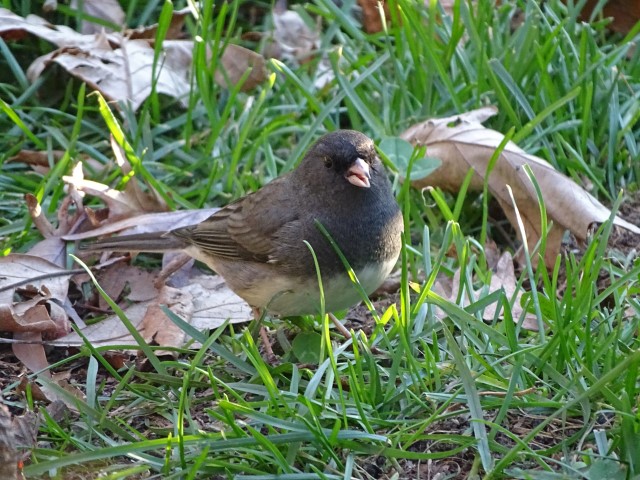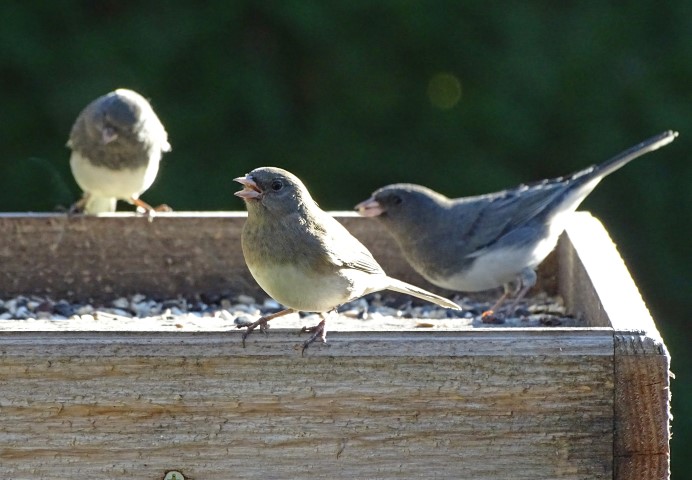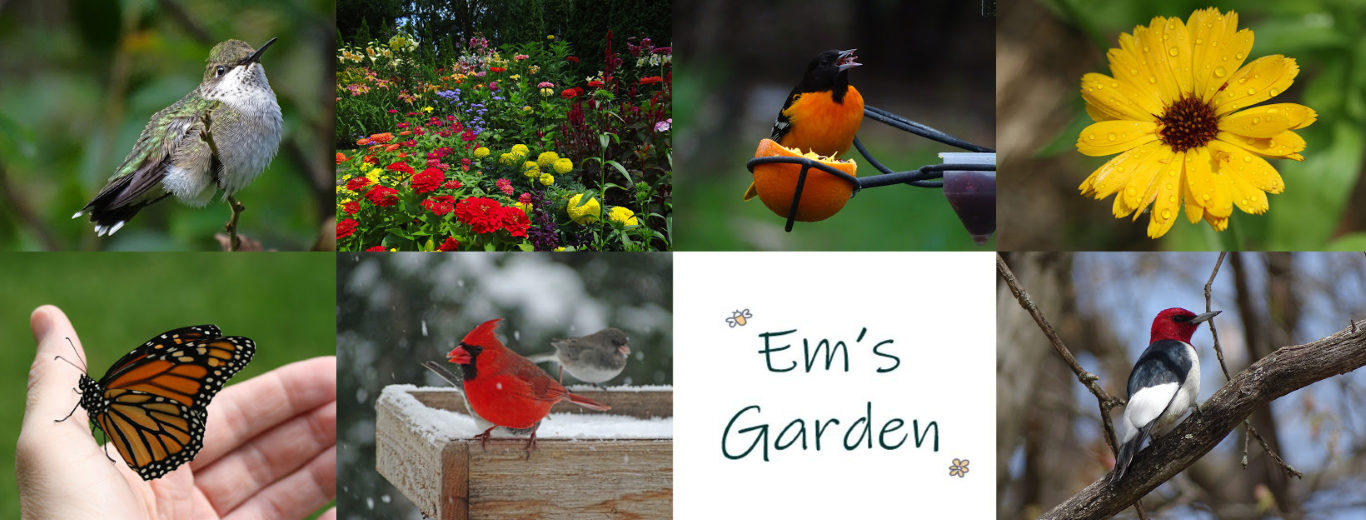
Every year I keep track of the “firsts” in my yard. I’m quirky that way. This time of year I record the date of the first snowflakes that tumble from the sky. In very early spring I’m excited to record the date that the first flowering bulbs begin to bloom. In mid-spring I keep track of when the first House Wrens and hummingbirds appear in my yard.
No, I’m not done. In early summer, I record the day that the first daylily blooms, and when the first Japanese Beetles show up to munch on my flowers. In mid-summer I listen for a buzzing sound coming from the tree tops so I can record the date that I heard my first cicada. And in the fall I write down the day that the first Dark-eyed Junco (a.k.a. snowbird) appears in my yard.
This year the first junco arrived on September 28th which seemed awfully early, and it sent me into a panic. Was he signaling a brutal winter ahead? Wait! I’m not ready for winter! But then I checked my garden journal and discovered that the first junco arrived on September 30th last year. The three prior years the first junco showed up on 10/15, 10/8, and 10/10 respectively, so we’re still in the ballpark.

What IS different about last year is the number of juncos I’m seeing. Last winter, for the first time ever, only a handful of the birds stayed around our neighborhood over winter. I’ve already counted more juncos in the last week than I saw in all of 2015.

You’ll find juncos searching for seeds and insects under trees and shrubs or in the lawn. They’ll also visit platform and hopper feeders. They aren’t picky about birdseed either. At (or under) my feeders they eat millet, peanut pieces, cracked corn, sunflower and safflower seeds.
In the dead of winter, many songbirds become scarce, but not juncos. When it’s so cold outside that it hurts to breathe, or when the weather resembles a snow globe that’s been given a hearty shake, I can still find these little slate-colored birds jumping around in the snow.
If they can make the best of winter, so can I.
